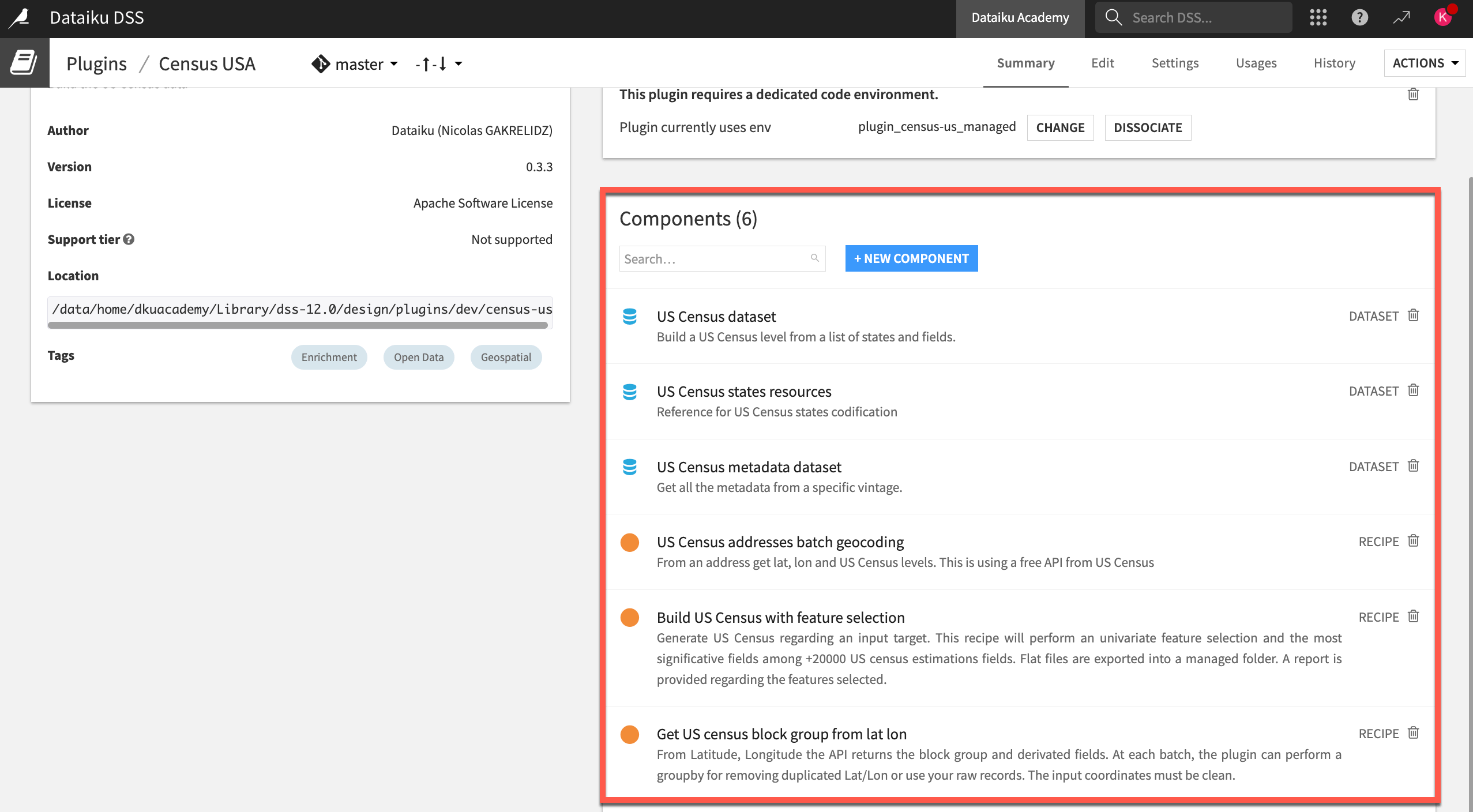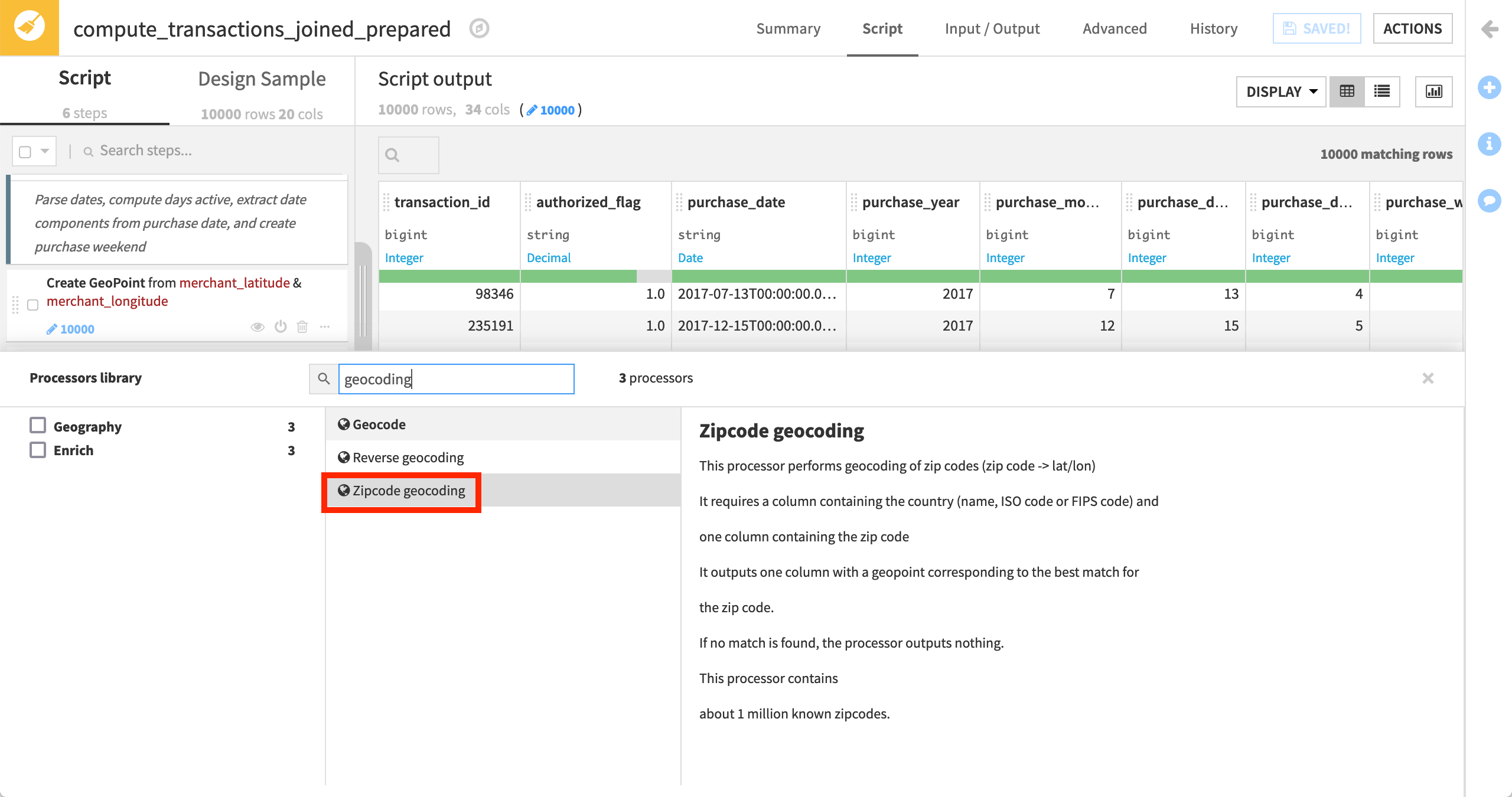Concept | Plugins in Dataiku#
Dataiku natively lets you connect to data, process data, train models, and more. To expand the power of Dataiku, you have the ability to add additional packaged functionality through plugins.
In other words, you can tailor your Dataiku instance to include the specific features you need to enhance your data pipelines and workflows.
Use cases#
Plugins vary from the simple to the complex. For example, you can retrieve Wikipedia page views, connect with Salesforce data, or get weather forecasts by location.
Let’s take a look at the US Census plugin, which consists of six components: three visual recipes and three dataset connectors.

You can use the visual recipes from this plugin to enrich a dataset with one of the hundreds of socio-demographic variables from the US Census Bureau. You can also use the dataset connectors to build and use the US Census data directly within Dataiku.
Note
Plugin documentation is available on the plugins page of the Dataiku website. The plugin’s page also includes a link to its source code on GitHub. Note that many plugins from the Dataiku Plugin store are open source.
Next, let’s learn more about what plugin components are and how they work.
Plugin components#
A plugin in Dataiku can contain one or more related components. Each plugin component consists of a graphical user interface (GUI) wrapper around code. It exposes a single type of Dataiku element, such as a dataset, recipe, webapp, processor, and more.

Note
Although the process of plugin installation and management differs for users on Dataiku Cloud and self-managed instances, usage of plugin components is the same.
Using a visual recipe component#
You can access a plugin’s visual recipe components by clicking the + Add Item > Recipe button in the Flow. You can also access them in the right panel.
The plugin’s visual recipe works like any other visual recipe. That is, you can select input parameters in the recipe settings and then run the recipe.
Using a dataset connector component#
To use one of the dataset connector components, Census USA, you can click + Add Item > Connect or create to access new dataset connectors for connecting to US census data.
This plugin will let you input values for parameters, such as:
States for which to fetch data
Geography granularity
Fields to extract
In the backend, Dataiku will fetch the data from the US Census website to create this dataset.
Using a processor component#
The Zipcode geocoding plugin includes a processor component called zipcode geocoding that’s accessible from the Prepare recipe.

Using this processor, you can extract geographic coordinates from location data such as country and zip code. This processor step works just like any other in the Prepare recipe!
Note
You’ve just learned about a few different plugin components that are available in Dataiku. To see the full list of plugin components, visit the page on Plugin Components in the reference documentation.
Next steps#
As you can see, the integration of plugins in Dataiku can help you accomplish a wide variety of tasks. If you want to extend the functionality of Dataiku even more, try developing your own plugins!

